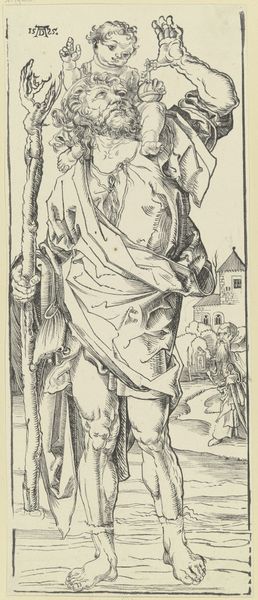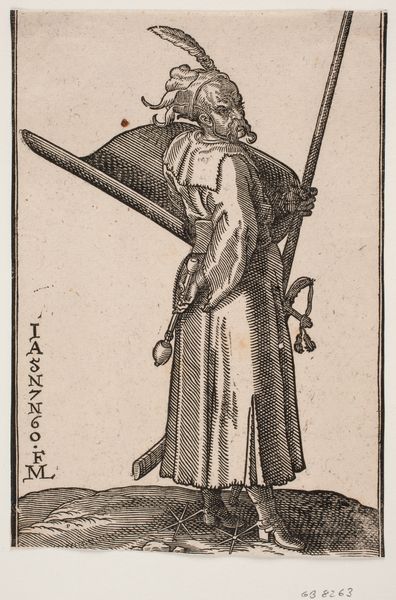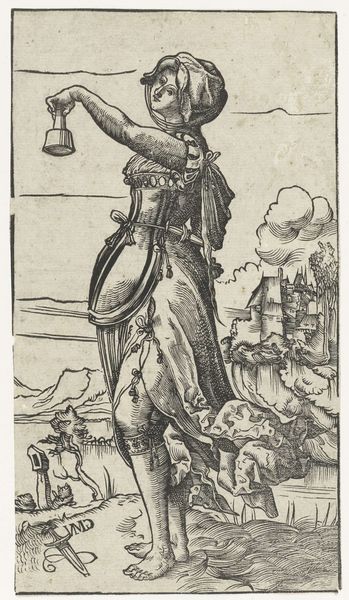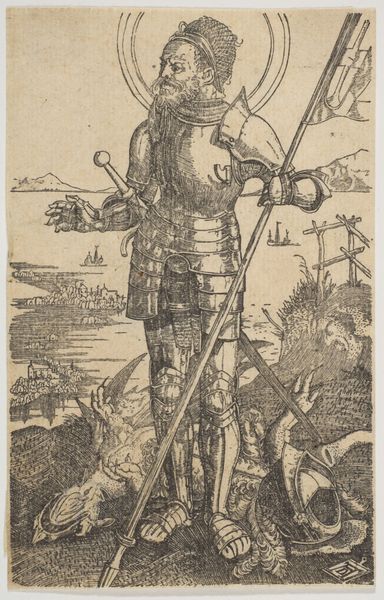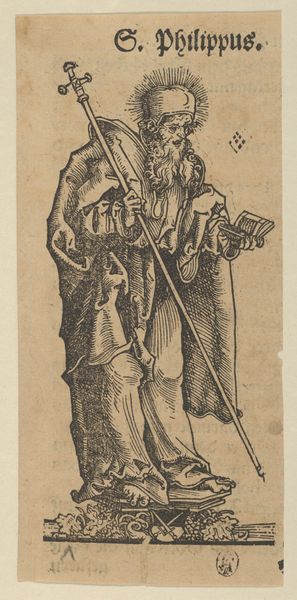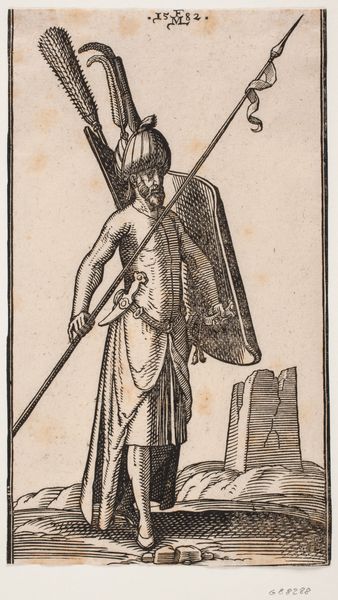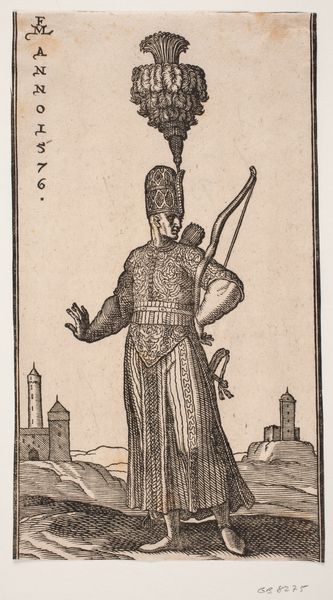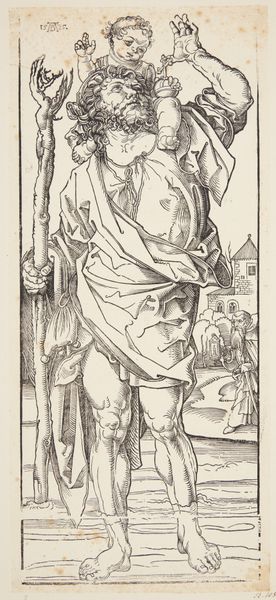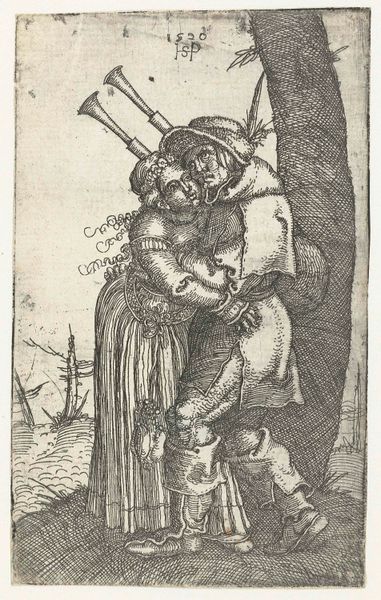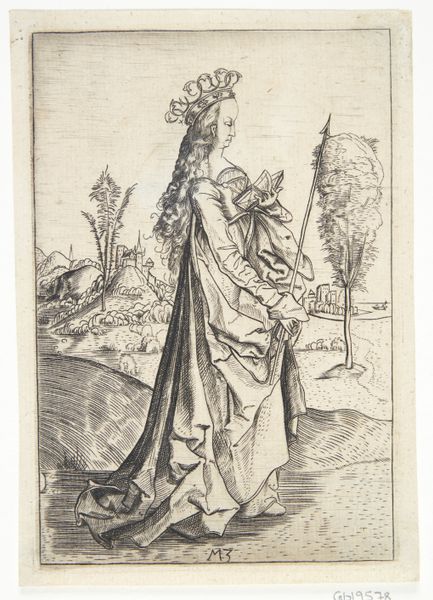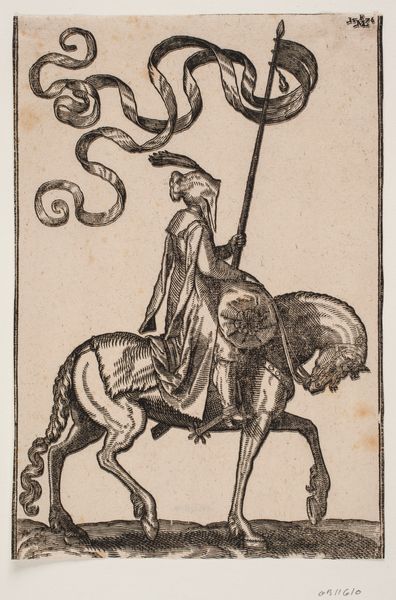
Stående janitshar set bagfra, fjerprydet hovedbeklædning, gevær ved venstre skulder 1575
0:00
0:00
print, woodcut
# print
#
landscape
#
figuration
#
11_renaissance
#
woodcut
Dimensions: 224 mm (height) x 138 mm (width) (bladmaal)
Curator: This intriguing woodcut by Melchior Lorck, created in 1575, is titled "Standing Janissary, Seen From Behind." Editor: My first impression is that the figure seems burdened, yet resolute. The high-contrast landscape adds to a sense of foreboding, or maybe determined advance? Curator: Indeed. Lorck, a Danish artist, was known for his travels and his detailed depictions of Ottoman life. Prints like this circulated widely, shaping European perceptions of the Ottoman Empire. The Janissaries were the elite infantry units of the Ottoman army, often conscripted Christian boys converted to Islam and trained for military service. Editor: Right, I'm particularly struck by the elaborate feathered headdress. It's almost comical in contrast to the heavy armament he carries – a rifle, scimitar and all. What is that little curled up device dangling on his rear? Curator: That’s the serpentining device the Ottoman's use for the gunpowder firing sequence. The symbolic weight is significant. Feathers often represent status, but here, juxtaposed with the grim reality of military service, it's as if he carries on him elements of captive power. Editor: I see what you mean. His garb signifies a strange blend of religious dedication, enforced conversion and enslaved servitude; all represented by a single figure presented in the fashionable form of "landscape" style. And is it just me or do the towers in the background look particularly Christian? I suppose for someone converted by force, it may well remind him of his true "home". Curator: Lorck's position within the European artistic circles likely meant this imagery functioned on several levels. While documenting a foreign culture, it would invariably serve a political role reinforcing western notions of empire and the "other." Editor: The composition’s effectiveness comes, I think, from Lorck’s clever layering of meaning and symbols. What looks like just a picture of soldier ends up raising some very disquieting questions. Curator: It reminds us how much early prints contributed to creating not just representations but stereotypes of unfamiliar societies. Editor: Precisely. A seemingly straightforward image, ripe with the complex cultural narratives of its time.
Comments
No comments
Be the first to comment and join the conversation on the ultimate creative platform.
